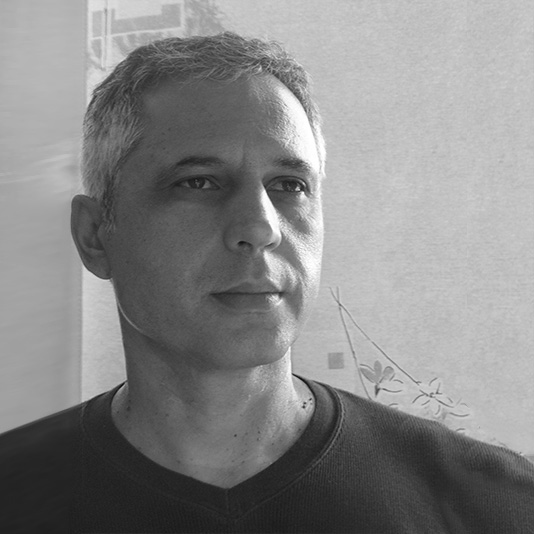
PhD candidate
Dimitris Mastorakos was born in Athens and holds a B.A from the Department of Photography and Visual Arts of the technological Institution of Athens, School of Graphic Arts and Artistic Studies as well as the Department of Economy Studies of the Law School of Athens. He holds an M.A in Cultural Management from the Department of Means of Communication and Culture of the Panteion University. Since September 2020 he is a PhD student in the University of West Attica in the Department of Photography and Visual Arts.
He has been a delegate in the following conferences:
- 2011: The Society of Studies of Cultural Alterity, “The Farther Beyond… in Art, in Life”, Cultural Center of the Athenian Municipality, “In Quest for a Place Before… A Place After…” or “The real in Photography.”
- 2013: The Society of Studies of Cultural Alterity, “I Choose to… in Art, in Life, Center of Arts of the Athenian Municipality, “The Moving Element…and Photography.”
- 2014: The Society of Studies of Cultural Alterity, “Art and Madness, Cultural Center “Melina Merkouri”, “Incarcerated Places.”
- 2016: 4th Conference of Acoustic Ecology, “Sound, Noise, Environment”, Aegean University of Mytilene, 3-6/11/2016, “Noise as a Meeting Place of the Individual and the Collective.”
His areas of interest are the theoretical approach of the photographic image, the relation between photography and philosophy, psychoanalysis and semiotics.
He is a current teacher of photography in public DI.E.K and private schools of photography.
PhD Thesis Abstract
Title: Noise and Photography: The Paradigm of Greek Photography during the 80s and 90s
The purpose of this PhD dissertation is the discovery and profound study of the “noises” which can be traced in the work of the Greek photographers during the 1980-1990 decade. The photographers of this particular decade, influenced by the ideas and writings of V.Flusser, A.M.Pohle and J.Fontcuberta, show certain propensity to the ready-made program of the camera, with the intention of its reversal and the adaptation of a diverse visual and photographic method. For such an aim, the exploration of the noise as a concept within a broader scope is essential, in order for the photographic noise to be widely perceived. Contemporary approaches in terms of noise are found in the theories of thinkers-philosophers, such as , Spinoza, Deleuze and Guattari, M.Serres, Ζ, Attali and Merleau-Ponty who examine noise not necessarily as something negative but as a twofold force which ‘infects’ a body, (individual or collective) and causes a positive or negative alteration.
Having said that, the noise as “body”, may allude to the human body, the body of an animal, the inorganic matter, as well as the social, the acoustic or the visual, the linguistic, the artistic, and the body of the photographic act, as single totality of material and ethereal things, actions and relationships. ‘Noises’ in this dissertation are investigated in relation to the photographers’ intention to distance themselves from the theory of the ‘exponent’ and the notion that photography constitutes the original representation of reality; in this manner they detach themselves from the social context that defines the program of the camera, behold beyond it, as well as beyond the traces and the material norms of the practices and techniques of the dominant ideology, the way they are ascribed on the emulsion of the means they used in order to form their finalized picture. In this dissertation, the central issue of the ‘freedom’ of the photographer-creator is being addressed in regard to the socially-shaped program of the device (according to V.Flusser), that is the ability for one to see beyond the latter, as well as the rightful ‘random’ and ‘unknown’ factors which penetrate into the photographic act. Hence, noise in this analysis becomes the catalyst for the detour from the known and conventional visual system so as to overturn it and discover new ways of sighting the world.
Introducing this concept, our quest for ‘noises’ involves those which are visible on the surface of the Greek photographers’ images during the 1980-1990 decade, regarding the material remainders of the already used technology (analog and digital) but also their aim (aesthetic and ideological).
Taking all the aforementioned into consideration this dissertation’s research methodology will be based on Gillian Rose’s Visual Methologies. The stages involved will be the following:
- Investigation of technology as a means of depiction.
- Analysis of the photographic image through its compositional elements which comprise (tone, color, light, geometry, space e.t.c).
- Content analysis.
- Semiotic, philosophical and psychoanalytic approach and analysis of the photographic images.
To conclude, an essential part of this dissertation is the intention of the creators themselves and the meaning they attribute to their artworks.


